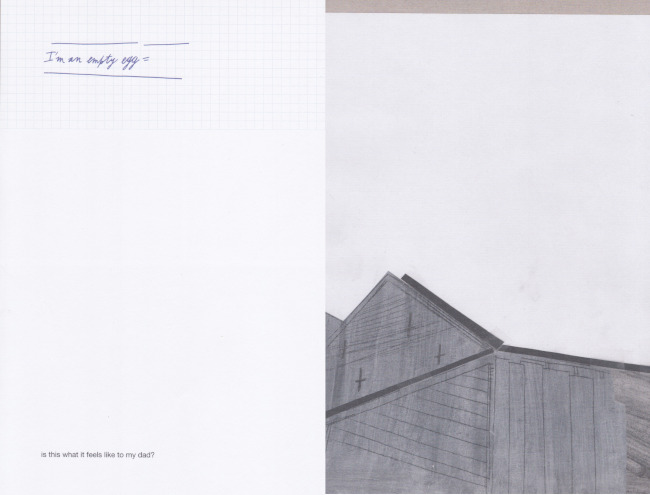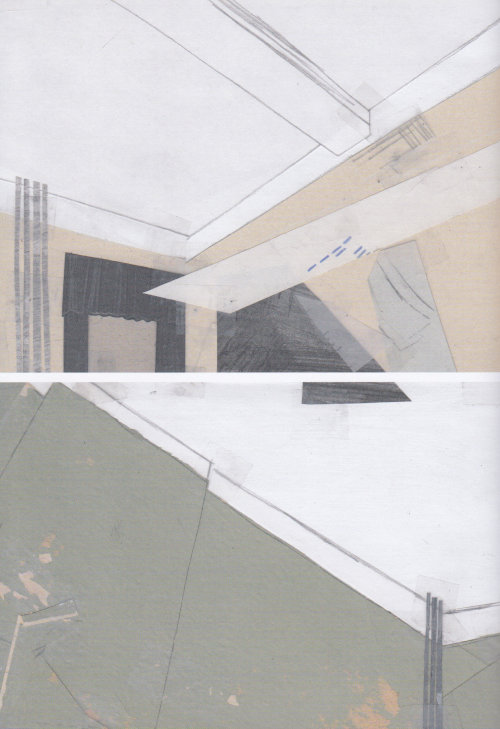I feel like an increasing number of the comics I see in the New York Times Book Review and other non-comics specific publications are (when they are not children’s or young adult books) autobiographies, all dependent on a person who lived through some event or had some kind of sickness or wants to help you help yourself. As a genre it depends heavily on a mix of empathy and novelty. You want to empathize with the protagonist/author, to find some way to understand them, but you also want to see events outside your ken, or read about someone else experiencing something you too have or will experience, or maybe just get that small joy that comes from the sense of "that could be me and I’m glad it’s not." So many of these autobiographies seem to involve various illnesses and ailments, and while I really should state some examples here, does it really matter? You can google up a list, see the titles and read the brief descriptions, decide it's not for me and continue on. None of the titles or authors have stuck in my head. Ephameron's Us Two Together is an autobiography about an illness, not hers but her father's, ublished by the Pennsylvania State University Press under their Graphic Medicine imprint the book. It is explicitly a part of this subgenre.
Ephameron (an unusual name, the credits page says it's a pseudonym for Eva Cardon) is a Belgian artist who I was previously unfamiliar with. Her website indicates she works more in illustration than comics, and her style mostly has a crisp stillness I associate with illustration. Us Two Together was originally published in Dutch in 2015 and this edition, translated by Michele Hutchison, is from 2019, a substantial, though not overlarge, hardcover that is quite nicely designed (though I cannot find a credit for that work). The muted colors of the cover, with a figure in silhouette but for collaged-in hands and further collaged paper and tape around it, promise something that won't look like a conventional black ink (or digitally colored) comic. In that regard one is not disappointed. This is a visually dynamic comic with light airy pages (a number of them just a few words or just an image) and layouts that do well in making something that travels an intriguing line between comic, illustration, and artist’s book. No panel borders, no word balloons, no regular panel grids, this book seems to come from a different place than most comics, yet unlike many books made by illustrators (at least those who seem to do that as their primary work), Ephameron's book does not come off as a sequence of static illustrations accompanied by text. There is a strong interaction of words and pictures and pacing and rhythm.
The style of the art is striking. Using a mix of pencil (colored and not), cut paper (colored and not, drawn on and not,) tape, and some kind of dark smudgy wet medium that I’m not totally sure of, she is using a lot of observational drawing while mixing it with abstract(ed) shapes. So, for instance the head of a person is drawn (from life one must assume) on white paper in some detail, but their coat is cut out of dark paper. Heads and hands tend to be rendered in detail, drawn on white paper, a focus of attention, a primary point of interaction between the narrator and her father.
The collage, the sometimes sharp edges of the cutting, the visible tape, all adds to the sense of disjointed communication that pervades the narrative via the father’s illness. At times, Ephameron collages abstract shapes over representational ones. One image shows geometric triangles taped over the father’s mouth, obscuring where he once was able to speak and communicate. Another image, has collaged shapes mixed with a collaged drawing of a window set like an abstract word balloon coming from his mouth, a jumble that fails to communicate clearly (metaphorically I mean, the usage of what the artist is communicating is clear).
Colors are most drab and grey, olive, pale muted blue, brown, black. It looks like winter everywhere (some images do show people in heavy coats), with only the occasional hint of red or orange, still muted. Architecture, objects, corners of rooms, fences, vases, beds and chairs, the space is all cropped, close-up, yet visually dynamic. Ephameron’s sense of composition and color blocking is excellent. This is a book that is great to just look at.
The narrative concerns Ephameron’s father’s illness, a form of progressive aphasia where he lost the ability to connect words and meaning, to speak or be understood, even to understand. To emphasize and focus on this the comic uses three different styles for three different narrative tracks, so to speak. A rather plain type font, almost always at the bottom left of a page (never on top of an image), represents the narrator/author’s words. They provide some critical context for the narrative and often some thoughts on what is going on. Always brief sentences, one at a time, two at most, every few pages, it’s a fractured narration in a plain style.
A second series of words is always shown as blue handwriting on a lightly gridded background, what I would call graph paper. These are words, phrases, occasionally little symbols and annotations, taken from the father’s journal. These texts provide an internal context for the father’s illness, starting out rather legible but progressing into abstraction. Words shift around, are replaced, are spelled oddly. The content tends to be self-questioning, metaphorical, almost poetic: “the text is a plank”, “I am an empty egg.” But also just “Help me.” These texts stop about two thirds of the way through the book at the switch to part 2. A third series of text in a larger, bolder font are the father’s words. Short phrases, repeated words, and then mostly just sounds. They are also silenced in the second part.
These three tracks clatter about in the book more or less successfully, and it is worth a shout out to the fine work of Michele Hutchison, for what was surely difficult work translating the fractured texts and sounds of the father’s words. The textual narration is important context to the story, though Ephameron’s preface to this edition also provides enough context, perhaps a little too much explanation before one has even read the book. In the narration, the author is expressing her feelings and the situation, but it comes off as rather short and abstract. She tries to verbalize what her father is feeling, how he might feel, how he is acting. She mentions other people: husband, multiple sisters, her mother, but they appear and then disappear, with no real sense of their existence, like she felt obliged to mention them, but then didn’t really have anything to say. In her preface she says “...I wanted to avoid the anecdotal. If I wanted to elevate my story into a literary project, my work needed to become relevant to a wider audience reading about terminal illness. Personal memories that didn’t advance the story line had to be left out.” To me, this is where the book starts to go wrong. By removing the anecdotal and personal, the story becomes less relevant because it seems too abstracted.
I can get a sense of the father’s illness via the journal excerpts as they are very effectively used and sequenced. But without the personal and the anecdotal the narration doesn’t make me feel, it doesn’t make me empathize. To say “old memories have been replaced with new ones” and then not even talk about those memories. “I try to understand my sister but she walks away sometimes” does not help the reader understand anything. Because we’ve not heard about the sister before, we don’t know what there is to understand. How does she feel? How is she coping?
It leaves me cold. I never get a sense of any of the people as people. We never see the father before he was sick, so we have no real sense of the loss. It's almost like for Ephameron it was so close and personally that it was inherently an emotional and powerful work, but for the outside observer something is missing. I'm not a heartless reader, I don't think I am lacking in empathy or the ability to feel strongly because of art (of all different media), but I read this book and am impressed by the imagery and style and... not much else. It's too restrained or it's not mysterious enough.
The most effective section is the second part, about two thirds of the way through the book. Her father is bedridden by his sickness, and the visual imagery becomes very focused. Numerous images show the ceiling of the room, with a painted beam and radiator pipes running down the wall. Blankets and hands on blankets are shown in tight framing. The father’s head in close up, but cropped halfway through by the bottom of the page. Even without any text, the sense of enclosure and closure, staring up at the ceiling, holding hands, a shrinking of the world, a shrinking of the body, it all is there and very powerfully rendered, and worth reading beyond my other criticisms.
I really want to like this book more than I do.










